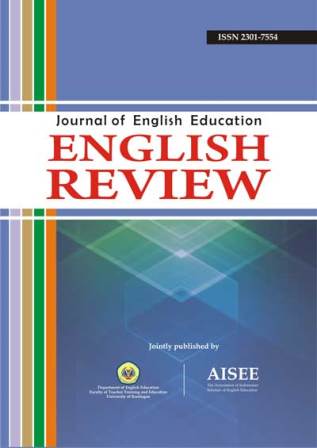INTERACTION PATTERNS IN ENGLISH AS FOREIGN LANGUAGE CLASSROOM AT LOWER SECONDARY SCHOOLS
Abstract
Interaction plays an important role in language learning process in classroom setting. This present study aims at investigating the patterns used in classroom interaction by English lower secondary teachers. Using qualitative approach, this study was carried out in eight lower secondary schools (SMP) in Jakarta. Moreover, twenty English language experienced teachers with three to thirty-six years of teaching experiences were recruited as participants. Interviews, classroom observations/recording and focus-group discussion were instruments to collect data. For analyzing the data, qualitative data analysis was selected in developing categories and sub-categories of the data. The findings showed that the teachers apply at least three identified interactional patterns in EFL classroom in which modify the IRF structure. Teachers initiate interaction to the entire class (T-whole class interaction) by giving questions and instruction. Then, they also point out one specific student to answer the question or do the required task (Teacher fronted student interaction). In addition, teachers set the classroom activity to make the students interact each other (student-student interaction). Moreover, the student responses and other interactional features identified in language classroom are also discussed.
Keywords: interaction patterns, EFL classrooms, secondary schoolAll articles published in English Review: Journal of English Education (ERJEE) are licensed under the Creative Commons Attribution 4.0 International License (CC BY 4.0).
Copyright Ownership
Authors retain the copyright of their articles and grant ERJEE the right of first publication. The journal is granted a non-exclusive license to publish, reproduce, and distribute the article in any format, medium, or platform, provided that proper credit is given to the original authors.
License Terms – CC BY 4.0
Under the Creative Commons Attribution 4.0 International License, others are free to:
- Share — copy and redistribute the material in any medium or format
- Adapt — remix, transform, and build upon the material for any purpose, even commercially
As long as they:
- Provide appropriate credit to the original author(s) and source
- Provide a link to the license (https://creativecommons.org/licenses/by/4.0/)
- Indicate if any changes were made
There are no restrictions on the reuse, reproduction, or adaptation of published articles as long as attribution is properly given.
Author Warranties
By submitting a manuscript to ERJEE, authors confirm that:
- The work is original and does not infringe any existing copyright.
- The manuscript has not been previously published and is not under consideration elsewhere.
- All sources and references are appropriately acknowledged.
- Necessary permissions have been obtained for any copyrighted materials used.









